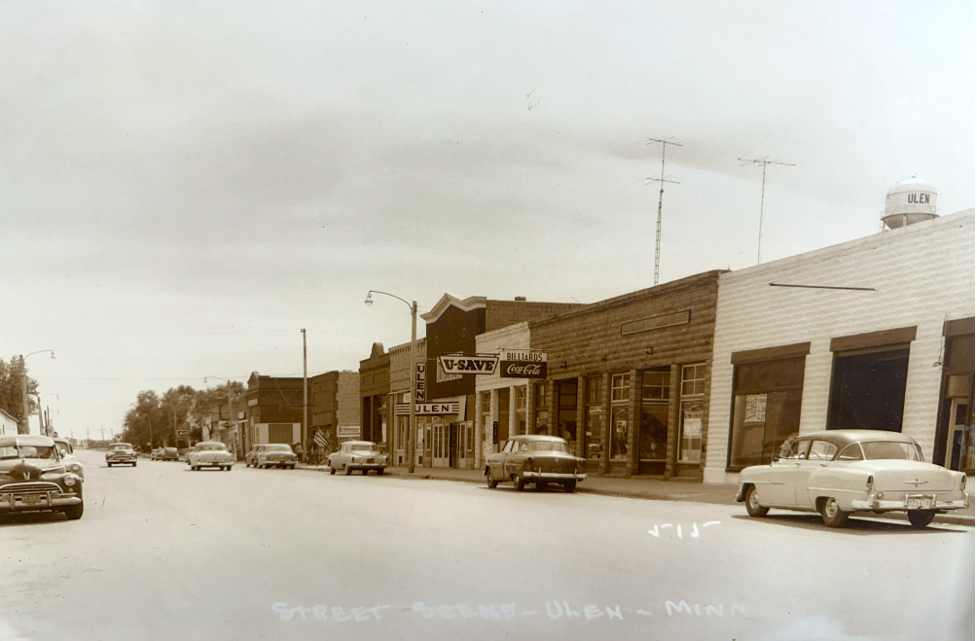Clay County Histories
Markus Krueger | Program Director HCSCC
Members of our historical society recently went to the Ulen Senior Center to listen to stories. We recorded stories from a table full of old friends and neighbors who had witnessed the history themselves and who also serve as keepers of the town’s stories. Here are a few of my favorites that we captured that day.
Many of the stories involved the Power House. The Power House got its name because it was originally the town power plant, containing a dynamo that supplied electricity to Ulen in the early 1900s. The Ulen Union newspaper printed the schedule of when certain tasks could be done, such as women doing laundry, so as not to overwhelm the power grid. Electricity was shut off at 9pm. The town got hooked up to a different source of power in the 1930s. Shortly after WWII, Ulen finally legalized alcohol sales, ending their long period of prohibition. The town’s bar was put in the building that used to hold that dynamo, and the bar kept the old name in spite of the new function. “So we were at the Power House…” was the beginning of many funny stories. Who knew outhouses were so mobile?
I asked Kim Syverson if he was related to Ulen fiddler Knut Syverson (1882-1957). Our museum and the Ulen Museum both have Hardanger fiddles that once belonged to Knut. Kim said no, explaining that there are a whole lot of Syversons around Ulen and they are not all related. Checking the Ulen history book, I see that in the old days, Ulen had six Ole Syversons. Two were even brothers! Why would parents name two of their sons the same name? To keep them straight, people called them Ole Syverson West, Ole Syverson East, and Ole Round Barn Syverson because, you guessed it, he had a round barn.
Sometime about the 1920s, a man was walking home drunk and fell asleep in a haystack. Ten days later, he was found frozen solid. The mortician had to thaw him out in order to fit him in a casket, so he took the unfortunate man to the pool hall where there was a large trough that he could fill with water and place him inside. This was during open hours, of course, so people played pool as a corpse bobbed in a trough of water. Well, thaw he did, and the body started to move in a lifelike way, sitting up in the water. This caused a billiard player to run out the door and down the street shouting “He’s living! He’s living!”
Next door to the Senior Center is the old Opera House. Upstairs is a wide-open room with a hardwood floor where local and regional bands used to play dances. In the early 1950s, teenager John Gunderson used to stand outside the building, watching with envy as the couples went inside to dance. He longed to dance himself, but he couldn’t go in. His father was Pastor Gunderson. It wouldn’t be proper. So he stood outside in the dark, in secret, unnoticed, and listened to the music.


